Polarizing produce
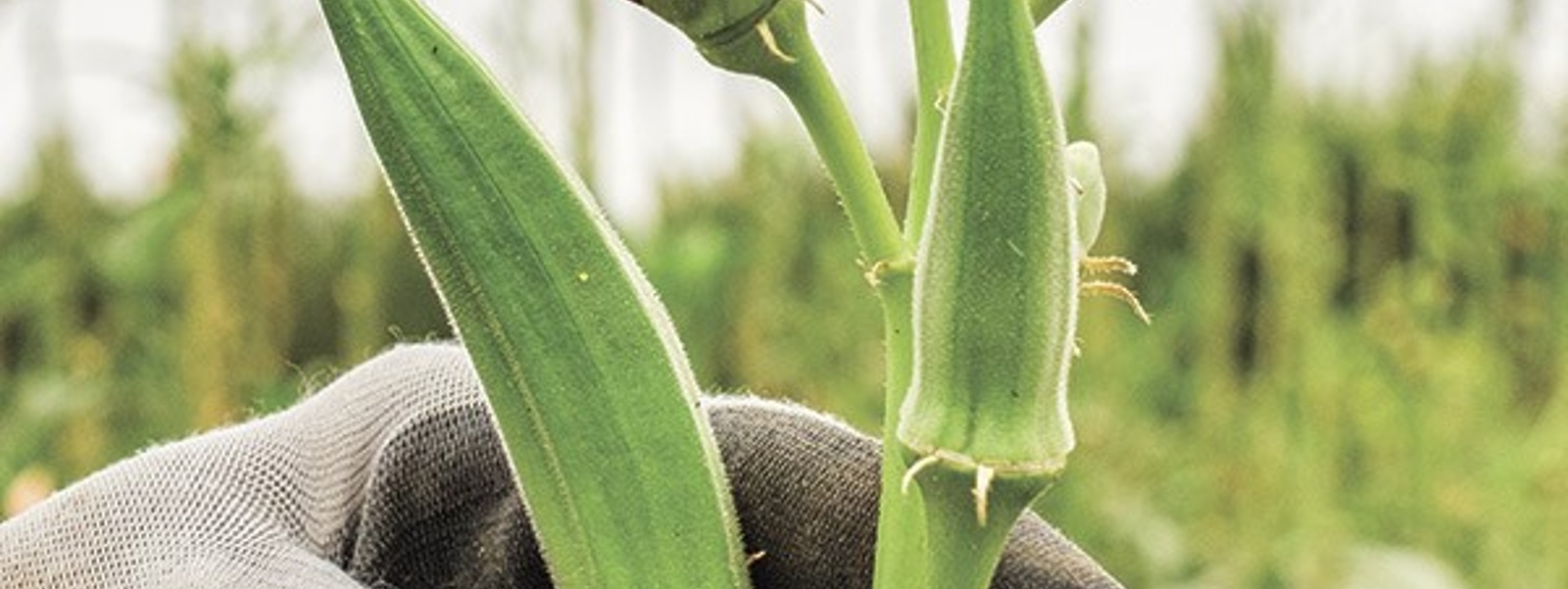
Summer 2025 California Bountiful magazine
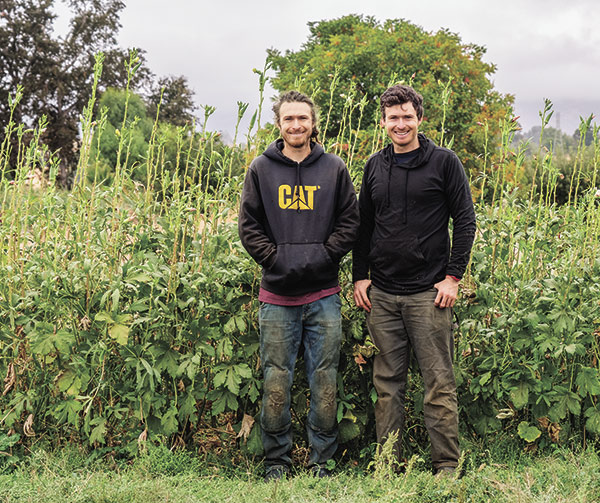
Twin brothers grow okra in the Central Valley
Story by Caleb Hampton
Photos by Steve German
California farmers, unrivaled in crop diversity, famously cultivate some 400 agricultural commodities. Certain crops such as almonds and avocados have become icons of the Golden State. But further down the list are a host of fruits and vegetables one might associate with other regions, which nonetheless play important roles on California farms, especially for small-scale farmers.
Twin brothers Andrew and Eric Walker, owners of Farmboy Organics, a 3-acre farm in Yolo County, have grown a modest plot of okra each summer since opening their farm in 2022.
The brothers were acquainted with the plant, cultivated for its edible seed pods, while working at nearby Full Belly Farm. When they struck out on their own, “We wanted to continue it,” Andrew says. “There weren’t many people growing okra.”
The species, native to East Africa, can be grown as a perennial in tropical climates around the world, with India, Nigeria and Mali recently topping the charts of the largest commercial producers. Introduced to the Americas by African slaves in the 17th century, okra can also be grown as an annual in warm temperate regions.
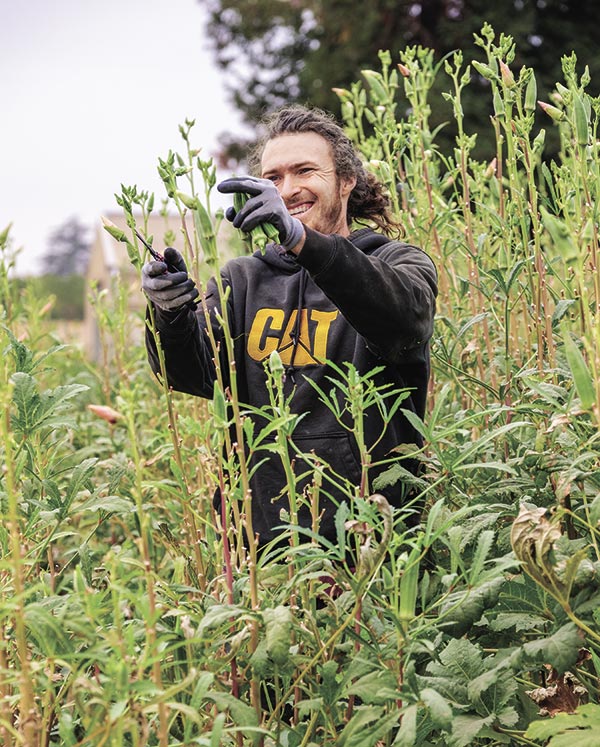
Resilient summer crop
Today, most U.S.-grown okra is produced in the Southeast. But the Walkers and other small-scale farmers in California have found success growing okra in the Central Valley.
“It does well as long as you water it, and it doesn’t need as much water as other things,” Andrew says.
The crop, whose narrow stalks can shoot up to 7 feet tall, thrived last summer during an intense heat wave that punished more traditional Central Valley crops such as tomatoes. “The okra actually liked all the heat,” Andrew says.
Other plant species related to okra include cotton, cocoa and hibiscus.
Okra plants produce cream-colored flowers that give way to narrow okra pods. The plant, in some regions called lady’s fingers because of the pods’ elegant shape, can be incredibly productive. From June through October, the Walker brothers harvest okra three times a week.
“It’s a lot of labor,” Andrew says, especially on a small farm where he and Eric do all the work.
To harvest their okra, the brothers use a small pair of scissors to clip off pods that have grown to a couple of inches in length. By the end of the season, they’re reaching above their heads to snip the okra, which they sell at the Davis Farmers Market and to a food hub that distributes produce to restaurants in the Bay Area.
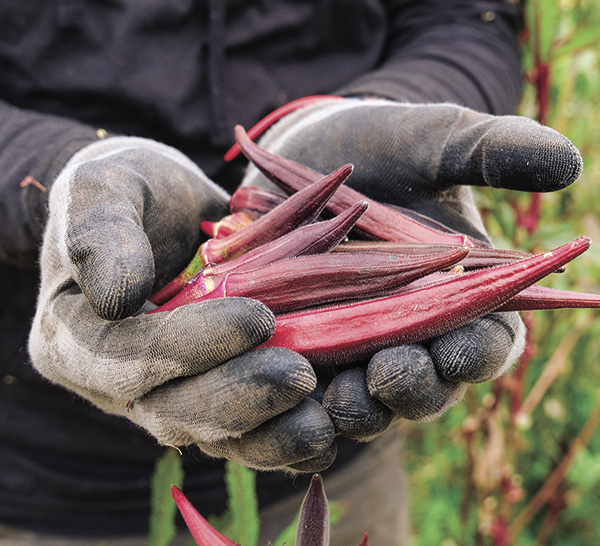
No middle ground
The green and purple pods—last year Farmboy Organics experimented with a variety called Burgundy—hardly keep a low profile at the twice-weekly markets.
“Once someone has been exposed to okra, they either like it or they don’t,” Eric says. “It’s very polarizing.”
The brothers have received more than one passing remark from shoppers about the slime okra can unleash when boiled. That’s because okra contains a type of fiber that dissolves in water and produces a slimy texture, anathema to some and prized by others as a soup thickener.
More often, “People get really excited,” Andrew says, when they discover the tropical vegetable at a Central Valley market. More than a few marketgoers who cherish okra for Southern, West African or South Asian cuisine have become regulars at Farmboy Organics’ market stall.
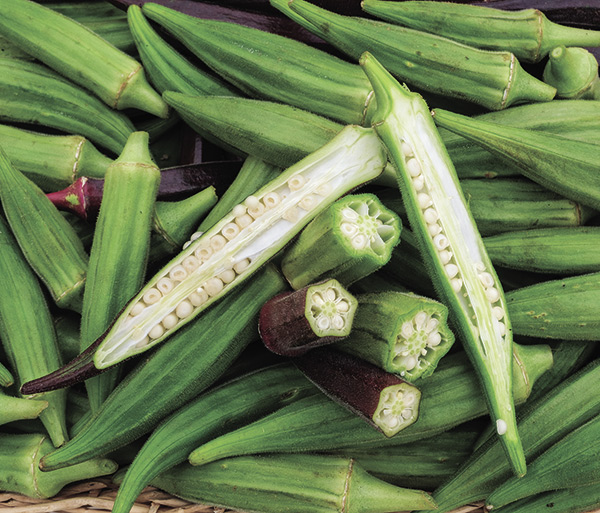
“The people who like okra really like it, and they want to find it,” Eric says.
One customer might mention a pot of gumbo they plan to cook up, says Andrew, while another will share a recipe for fried, grilled or pickled okra.
During summer, when tomatoes dominate their produce haul, okra accounts for around 5% to 10% of Farmboy Organics’ sales, the brothers estimate, adding there’s enough demand for the amount of okra they’re able to grow.
Most importantly, the unique vegetable helps the farm achieve the variety they want to offer customers, Andrew says. “It adds a nice, little different thing.”

